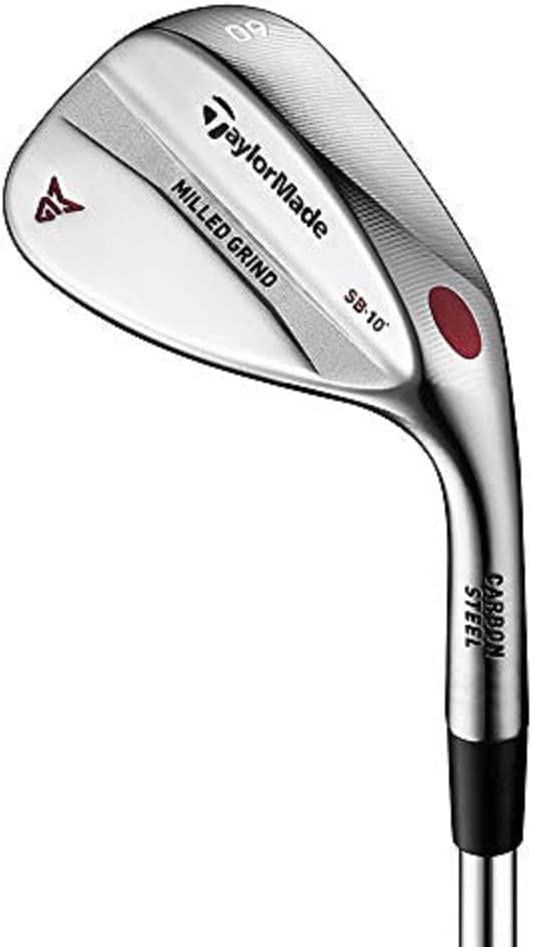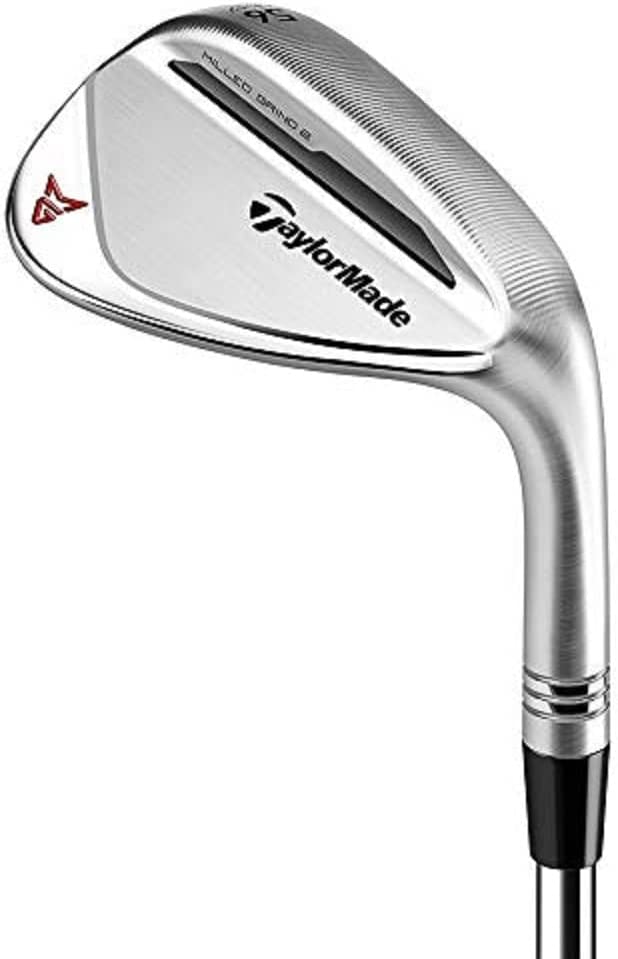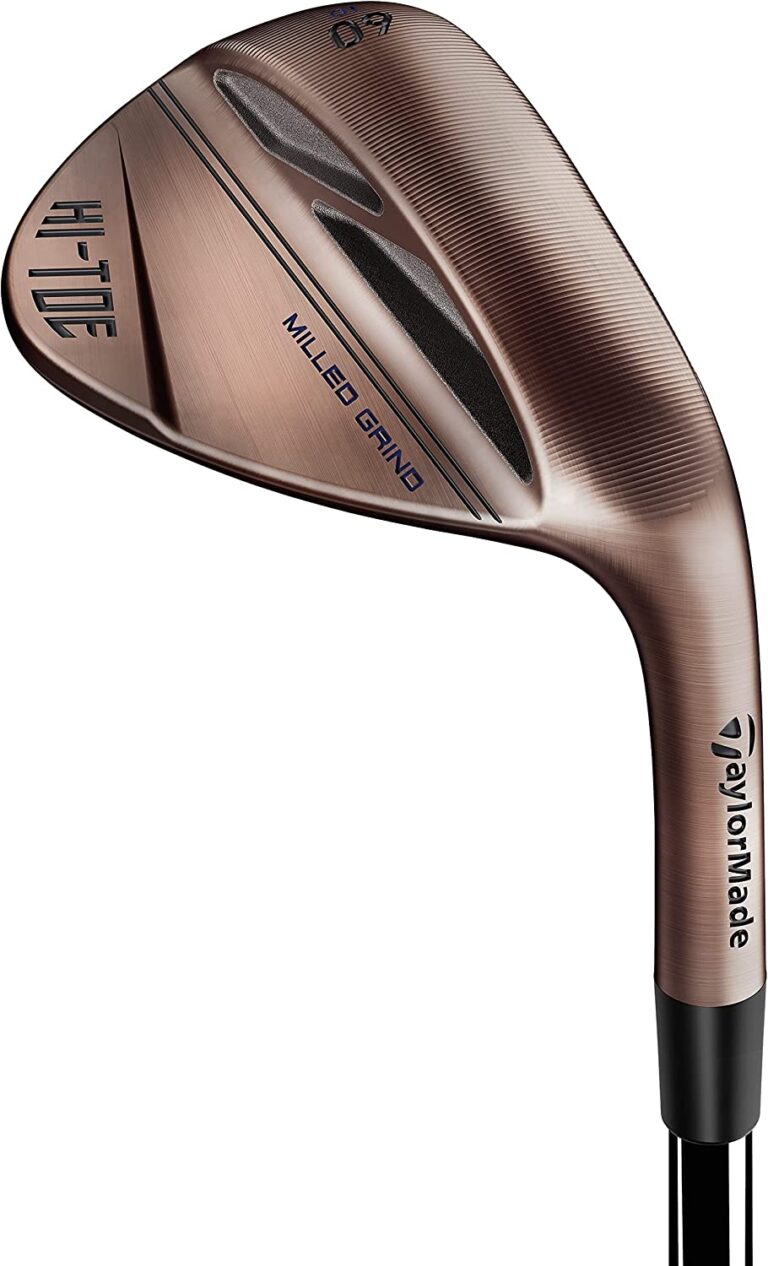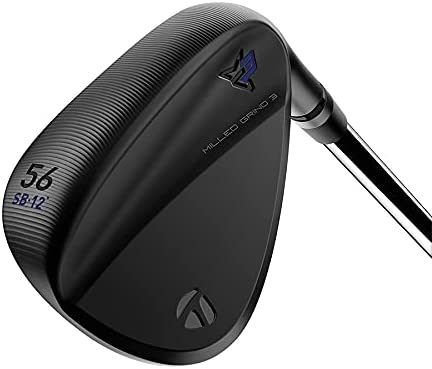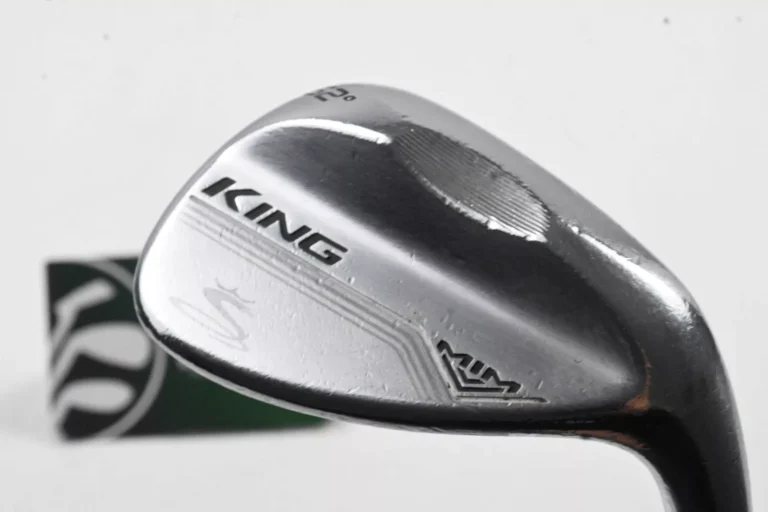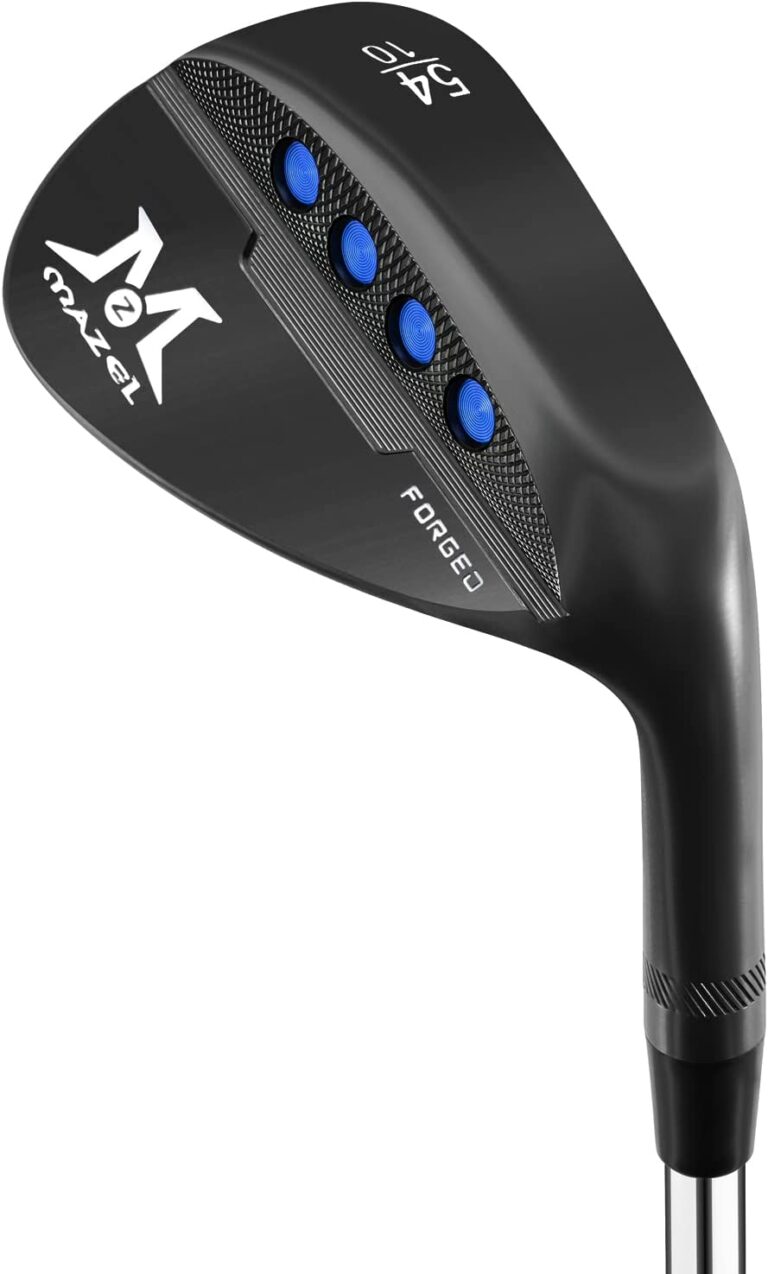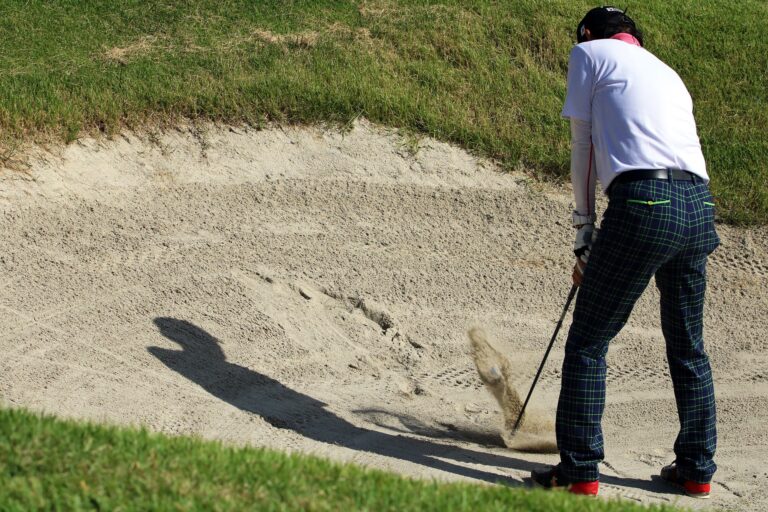60 Degree Wedge
Well now, what do we have here? A 60 degree wedge, you say? Oh boy, you’ve got yourself a real game-changer!
Earlier, we discussed in detail the use of a 56-degree wedge as we as how a 52-degree wedge should be used, you might want to check them out.
In the world of golf, every club has its place, but few can match the versatility and precision of the 60 degree wedge. With a little bit of practice and a dash of finesse, this club can be your secret weapon on the golf course. Let’s dive into the nitty-gritty of how this gem can elevate your game.
The Magic of the 60-Degree Wedge.
Understanding the Basics.
First things first, let’s wrap our heads around the basics. A 60 degree wedge, often called a lob wedge, is a club with a loft angle of—you guessed it—60 degrees. This hefty loft gives the ball a high trajectory, perfect for those delicate, high-arcing shots you need when you’re stuck in a tight spot.
Getting Out of a Bind.
When you’re in a pickle, like in deep rough or a sand bunker, the 60 degree wedge is your best friend. Its design allows it to glide through the turf or sand, helping you to pop the ball high into the air and land it gently on the green. It’s like having a get-out-of-jail-free card in your golf bag.
The Art of Using the 60-Degree Wedge.
The Perfect Swing.
The swing is arguably the most crucial aspect of using a 60-degree wedge. A good swing with this club is not about power but rather control and precision. With a relaxed grip and a fluid motion, allow the club to do the work for you.
Aim for a crisp, clean contact with the ball, and let the club’s loft generate the lift.
Ball Positioning: The Sweet Spot.
Finding the right position for the ball when using a 60-degree wedge is paramount. Generally, the ball should be placed in the middle of your stance or slightly forward. This setup promotes a descending blow, ensuring clean contact and preventing the club from digging into the ground.
Understanding Loft and Bounce.
To use a 60-degree wedge effectively, you need to understand the concepts of loft and bounce. The loft is what gets the ball airborne, while the bounce helps the club glide through the turf or sand without digging in.
A higher bounce is beneficial for soft conditions or fluffy lies, while a lower bounce is better for hard conditions or tight lies.
Implementing the Right Shot.
A 60-degree wedge is versatile and can be used for various shots, including full shots, chips, pitches, bunker shots, and flop shots. Selecting the right shot depends on your situation on the course and your comfort level with different shots. Remember, practice makes perfect!
Controlling the Distance.
Controlling the distance of your shots with a 60-degree wedge is more art than science. It’s not about a full swing every time but adjusting your swing length and speed to achieve the desired distance.
Start with a half-swing for shorter shots and gradually increase your swing length for longer distances.
Adding Spin.
The 60-degree wedge is an excellent tool for adding spin to your shots. By hitting down on the ball and maintaining a steady speed through impact, you can generate backspin that makes the ball stop quickly after landing.
This skill is particularly useful when the green is fast or the pin is close to the edge.
60 Degree Wedge: A Closer Look.
Design Features.
The design of a 60 degree wedge is what sets it apart. The high loft, coupled with a unique bounce angle, makes it perfect for specialized shots. Some models also feature grooves on the face for added spin control.
Choosing the Right 60-degree Wedge
When choosing a 60-degree wedge, consider factors like your skill level, play style, and the course conditions you usually face. Some golfers prefer a wedge with a higher bounce for sand play, while others might opt for one with a lower bounce for firm fairways.
60 Degree Wedge: The Pros’ Secret Weapon
You’ve probably seen the pros of using a 60 degree wedge on TV. It’s no coincidence! This club is their secret weapon for achieving incredible precision and control, especially around the greens.
Perfecting Your Game with the 60-Degree Wedge:
Practice Makes Perfect.
To master the 60 degree wedge, you’ll need to put in some practice time. Start by working on your swing mechanics, and then practice a variety of shots to get a feel for the club’s versatility.
Drills for Success.
There are several drills you can use to improve your performance with the 60 degree wedge. From distance control exercises to trajectory practice, these drills can help you to develop a more nuanced understanding of how this club behaves.
How Far Can You Hit with a 60-Degree Wedge?
Distance: A Variable Not Set in Stone.
When it comes to the 60-degree wedge, distance isn’t a static figure. It’s a variable influenced by multiple factors, such as swing speed, ball type, course conditions, and most importantly, the golfer’s skill and experience.
Average Distances: A Starting Point.
On average, a golfer can expect to hit a 60-degree wedge between 65 to 80 yards on a full swing. This is a general range and may vary significantly from golfer to golfer.
Pro Golfers: The Exception to the Rule.
Professional golfers, with their exceptional skills and swing speeds, can send a 60-degree wedge much further. It’s not unusual for a pro golfer to hit this club over 100 yards.
Factors Influencing Distance:
Swing Speed: The Driving Force.
Swing speed is a critical factor in determining how far you can hit any golf club, including the 60-degree wedge. The faster your swing speed, the further the ball will travel.
Ball Type: More Than Just a Sphere.
The type of golf ball you use can also influence the distance. High-performance balls designed for distance can add several yards to your shots compared to standard balls.
Course Conditions: The Ground Reality.
The condition of the course plays a role as well. For instance, on a wet day, the ball might not roll as much after landing, reducing the overall distance.
Technique: The Key to Maximizing Distance.
Perfecting your technique can significantly improve the distance you achieve with a 60-degree wedge. This includes factors like proper stance, correct grip, precise ball position, and a smooth, controlled swing.
60 degree wedge distance.
While the average distance of a 60-degree wedge may be between 65 to 80 yards, remember that golf is a game of skill, not just numbers.
It’s about using the right club in the right situation to get the ball in the hole in the least number of strokes.
So, while distance is important, it’s not everything. Focus on mastering the 60-degree wedge’s capabilities, and you’ll soon be making shots that leave your buddies green with envy!
Beyond the 60 Degree Wedge: An Array of Golf Clubs.
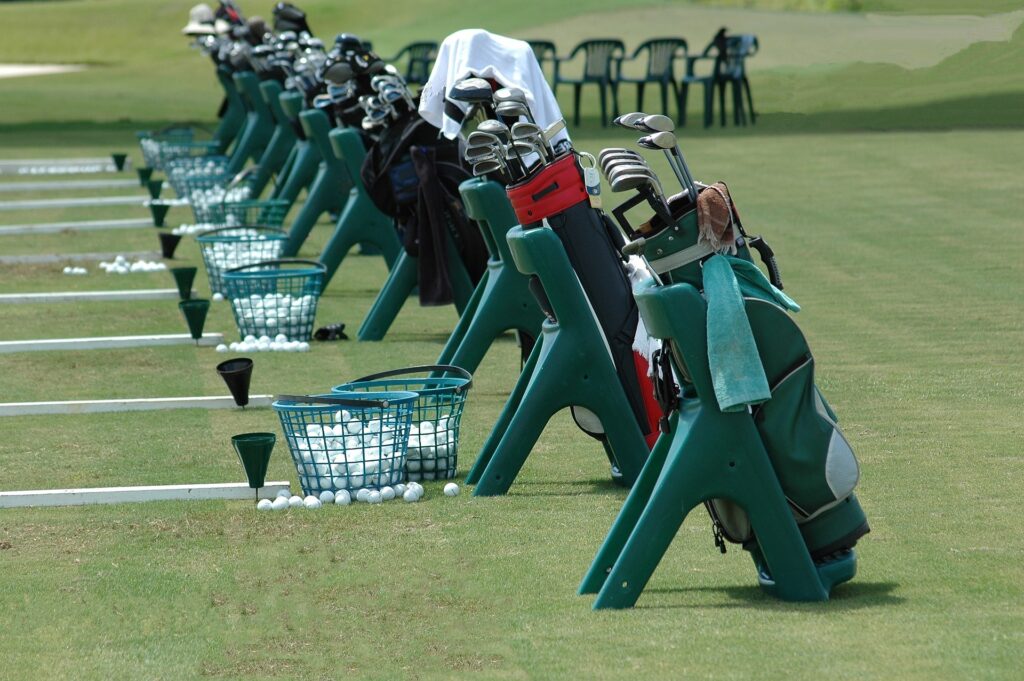
Now that we’ve given the 60 degree wedge its due attention, it’s worth noting that it’s just one piece of the puzzle. A well-rounded golfer needs a variety of clubs in their bag to handle the myriad situations that arise on a golf course.
Drivers and Woods.
Drivers and woods are your go-to clubs for long-distance shots, typically used for the tee-off. They have the lowest loft angles, allowing the ball to travel farther.
Irons.
Irons range from 1-iron (the least lofted) to 9-iron (the most lofted) and are generally used for shots when the ball is 200 yards or less from the green.
Hybrids.
Hybrids are a cross between woods and irons, combining the best of both worlds. They’re versatile and can be used in a variety of situations, including long fairway shots and getting out of rough patches.
Wedges.
Besides the 60 degree wedge, there are several other types of wedges, including the pitching wedge, gap wedge, and sand wedge. Each of these has a specific purpose and can be handy in different scenarios on the course.
Putters.
Last but certainly not least, the putter is arguably the most important club in your bag. It’s used for short and low-speed strokes with the aim of rolling the ball into the hole from a short distance away.
Matching the Club to the Shot.
Choosing the right club for a shot is a skill that comes with practice. It depends on factors like the distance to the hole, wind conditions, obstacles in your path, and the position of your ball.
A 60 degree wedge might be the perfect choice for a tricky shot onto the green, while a driver would be more suitable for the opening shot of a long par 5.
Endless Possibilities with the 60 Degree Wedge
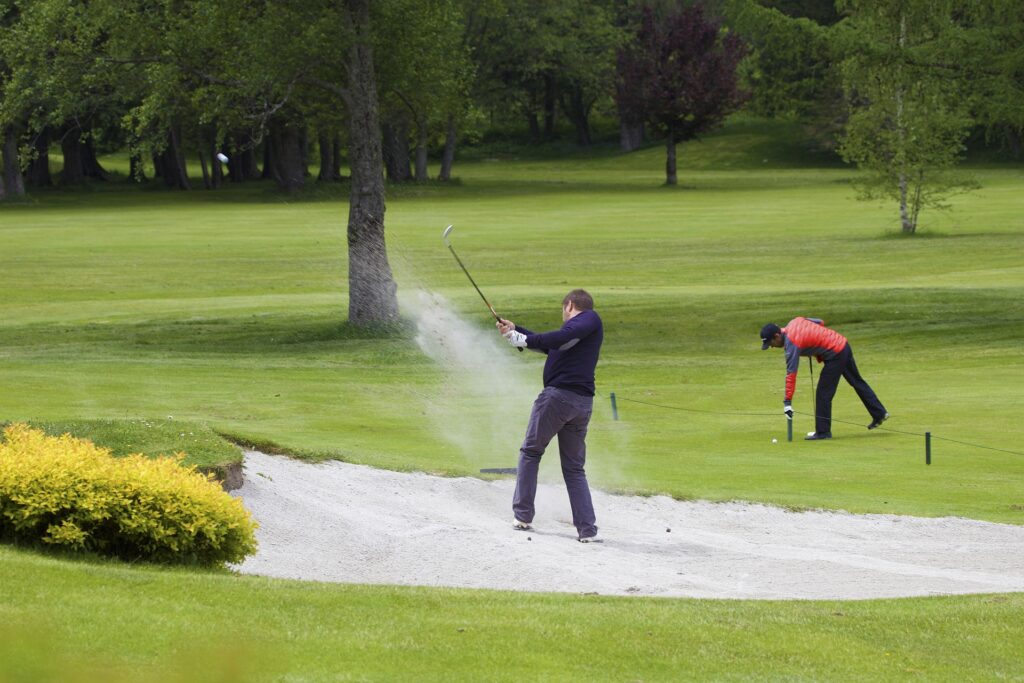
The 60 degree wedge is just the tip of the iceberg when it comes to the range of shots you can play in golf. But it’s a great place to start if you want to improve your short game and tackle challenging situations on the course.
So go ahead, give that 60 degree wedge a whirl, and watch as your golf game takes a turn for the better.
FAQs about the 60 Degree Wedge.
So, we’ve got a few frequently asked questions about the 60-degree wedges and have answered as best as we could.
What’s the main purpose of a 60-degree wedge?
The 60-degree wedge, or lob wedge, is primarily used for short, high-arching shots. These are typically employed when you’re close to the green and need to get the ball over an obstacle or want it to stop quickly after landing.
When should I use a 60-degree wedge instead of a pitching wedge?
You’d typically use a 60-degree wedge when you need a higher trajectory and more spin for a softer landing. A pitching wedge, which has less loft, is more suitable for longer shots or when a lower trajectory is desirable.
Is it harder to hit with a 60-degree wedge?
The 60-degree wedge can be a bit tricky for beginners due to its high loft. It requires a good technique to achieve clean contact and the desired flight. But with practice, you can certainly master it!
Can a 60-degree wedge be used in a sand bunker?
Absolutely! A 60-degree wedge is excellent for bunker shots, especially when the ball is buried or the lip of the bunker is high.
How far can I hit with a 60-degree wedge?
The average golfer can expect to hit about 65-80 yards with a full swing using a 60-degree wedge. However, distance can vary greatly depending on factors like your skill level, swing speed, and ball position.
Does every golfer need a 60-degree wedge in their bag?
While not essential, a 60-degree wedge is a valuable addition to any golfer’s bag, especially for those who play on courses with lots of hazards or tight greens. It’s an incredibly versatile club that can help you navigate tricky situations.
Conclusion.
Alright, let’s wrap this up, shall we? The 60-degree wedge is a potent tool in the right hands, and it could well be the secret sauce that takes your golf game up a notch—or two, or three!
From high-pressure bunker escapes to delicate chips onto the green, this club offers a versatility that’s hard to match. With practice and a good grasp of the fundamentals, you’ll be wielding your 60 degree wedge like a pro in no time.
And remember, it’s not about the size of the club in the game, it’s about the size of the game in the club. So, give that 60 degree wedge a swing and watch your game transform before your eyes. Now, isn’t that a sight for sore eyes?

